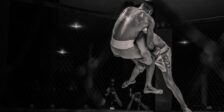
The term defensible space refers to an area around a home that helps to protect it and the residents inside from wildfires. When creating defensible spaces, homeowners should deliberately leave space between trees, grass, shrubs, and the home itself. Following this strategy helps to prevent flames from traveling quickly from one area to the next and igniting a wildfire.
The Oakland Wildfire of 1991
To understand why defensible space is important, people only need to look to a 1991 wildfire in Oakland that claimed 25 lives. Despite the fact that wildfires struck the same area in 1980, 1970, and 1923, it was not enough to convince people not to build homes there. The densely wooded neighborhood had almost no defensible space.
The Oakland wildfire also damaged nearly 3,000 homes. Tragically, the fire started in a single home and firefighters thought they had doused it all with water. What they did not notice was that needles from pine trees fell to the ground and began smoldering within a few hours due to the dryness and heat.
Fire quickly spread throughout the entire neighborhood, and the fact that many houses sat on steep hills further complicated the recovery effort. California now mandate that all new properties contain at least 100 feet of defensible space.
The Four Zones of Defensible Space
FIRESafe of Marin County recommends that homeowners divide the 100 feet of required defensible space into four zones. The first is Zone 0, which is the area five feet or less from the home. No combustibles should be in this area at all.
Homeowners should remove all fallen leaves, pine needles, and tree branches and avoid storing firewood or any type of lumber here. They should also avoid planting vegetation so close to the home. The other zones include:
- Zone 1: Located five to 30 feet from the home, this zone includes decks, structures, and other buildings that overlap the house. No leaves, branches, or needles should be in this area, and homeowners should only plant fire-safe plants. They should also clear vegetation from around play structures, sheds, and fences.
- Zone 2: This zone starts 30 feet from the home and extends to 100 feet. More space may be necessary for homes built on hills, surrounded by flammable vegetation, and those in a drainage area. Homeowners may find this brings them onto their neighbor’s property, so it is important to collaborate with neighbors to create defensible space as it will benefit both parties. Grass should be no more than four inches, and leaves, needles, and tree branches should not be present.
- Zone 3: Referred to as the access zone, this area includes the 10 feet that extends horizontally from driveways and roads. Property owners are responsible to clear vegetation and take several other steps to keep the area safe.
The above represent only a portion of the recommendations for each zone. The full recommendations are available here.
Homeowners Should Consider a Fire Risk Assessment
From low-hanging branches to distressed trees and flammable equipment, it’s hard to tell what presents a fire hazard. Several types of companies offer fire assessments, including many landscapers and arborists.
Creating defensible space involves removing or repairing anything that could cause a fire to spread faster. This preventative step helps homeowners avoid becoming wildfire victims.




